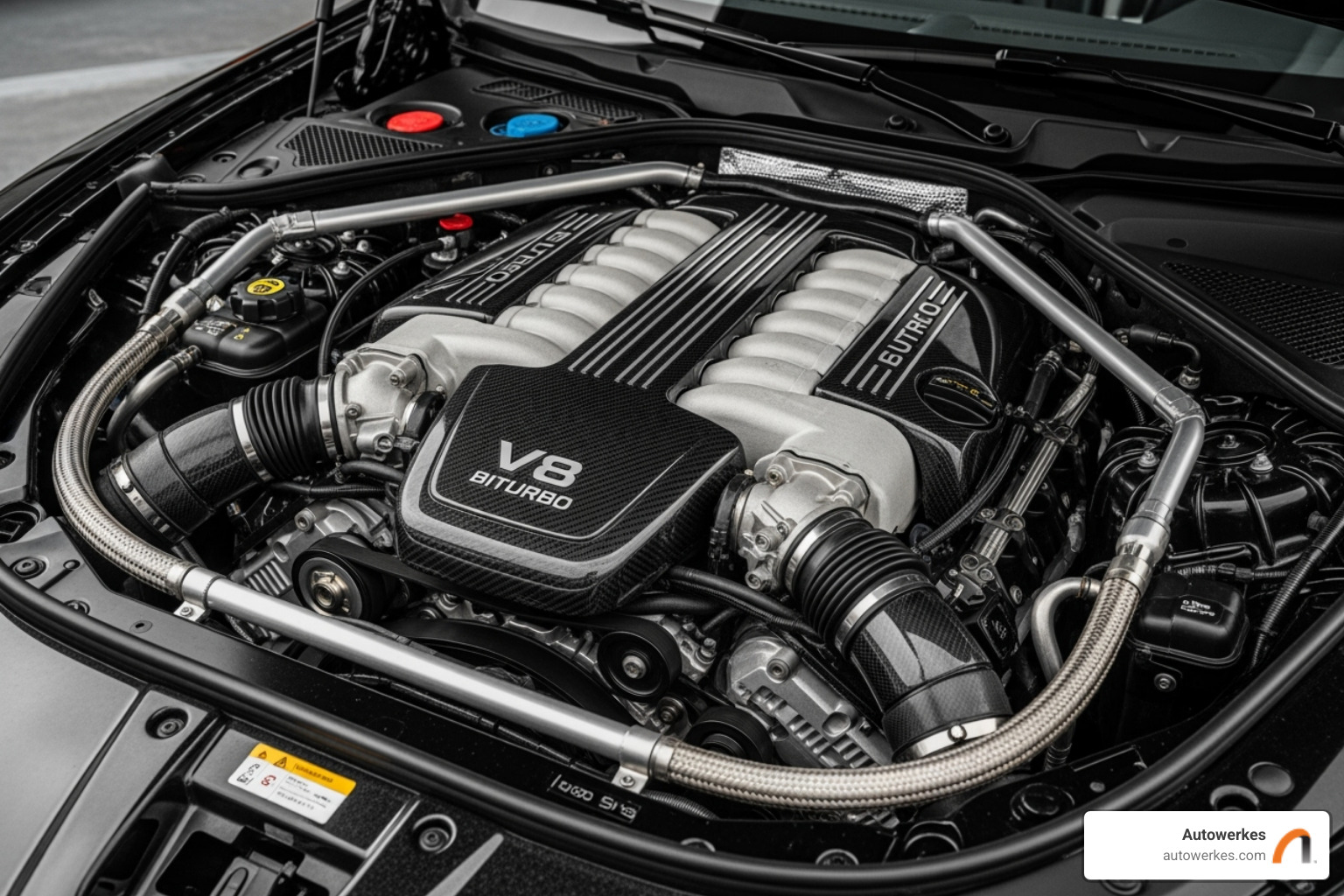BMW Brake Sensor Swap: Front, Rear, and Everything In Between
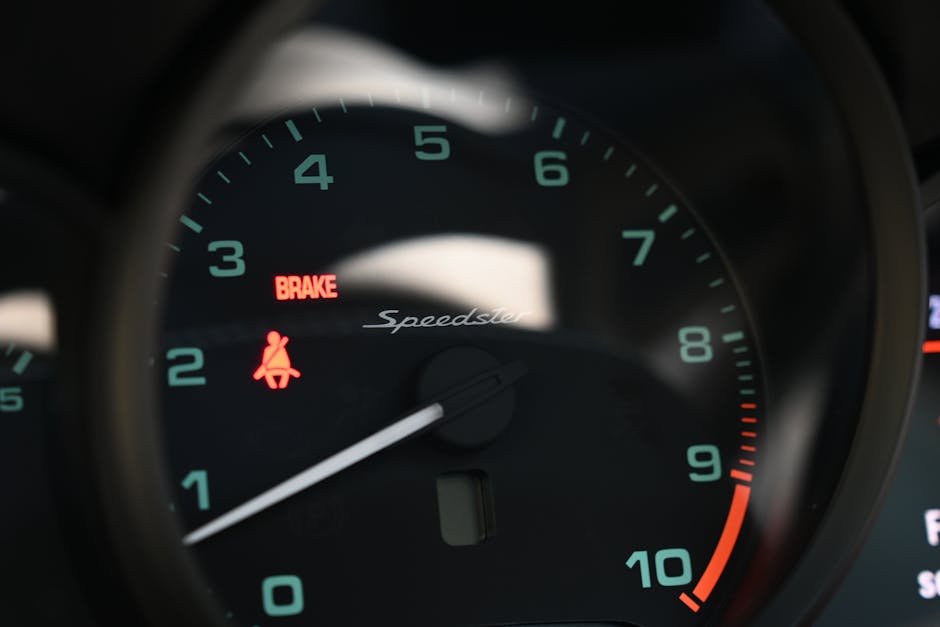
Understanding Why Your BMW's Brake Warning Light Demands Attention
When the red brake warning light appears on your BMW's dashboard, it's a critical alert. A BMW brake pad wear sensor replacement is needed to prevent expensive rotor damage and ensure your safety.
Quick Answer for BMW Brake Pad Wear Sensor Replacement:
- When to replace: When the dashboard warning appears or the sensor has contacted the rotor.
- Cost-effective timing: Replace sensors when changing brake pads (typically every 30,000-50,000 miles).
- Essential tools: Floor jack, jack stands, flathead screwdriver, 10mm and 8mm wrenches.
- Reset required: Use the instrument cluster method or an OBD-II scanner after installation.
- Professional benefit: Proper diagnosis, electronic parking brake service, and system reset.
This small but crucial component often confuses even DIY mechanics. A BMW forum user on their first brake job asked, "I was not sure if I should replace the Wear Sensors"—a common question.
Modern BMWs use advanced two-stage sensors with resistors. These provide an early yellow warning (at 270 ohms) before the final red "change immediately" alert when the circuit opens. This tiered system gives you time to plan for the repair.
Knowing when and how to replace these sensors saves you from persistent warnings and protects your rotors from costly damage.
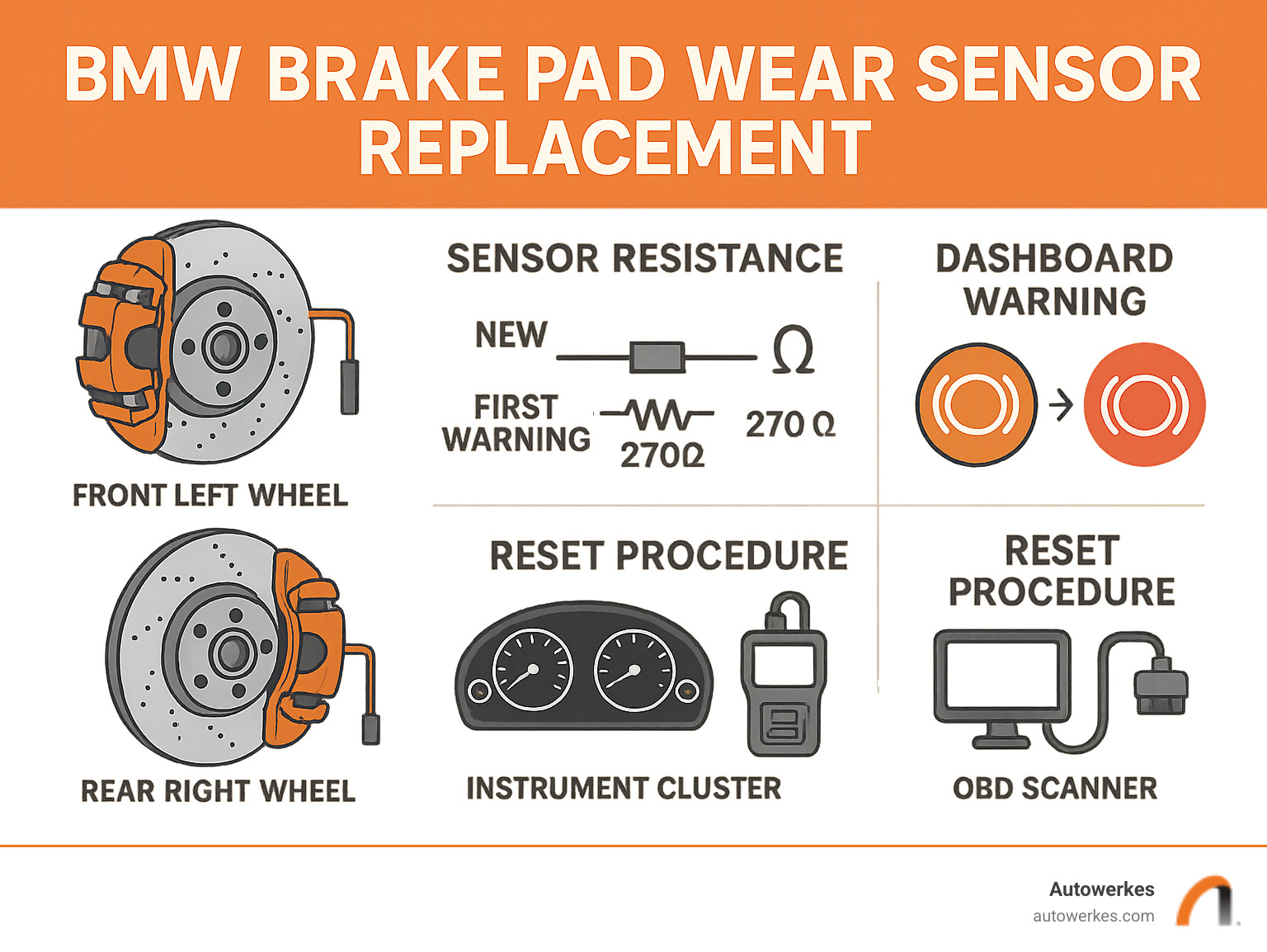
The Complete Guide to BMW Brake Pad Wear Sensor Replacement
That red warning light on your BMW's dashboard isn't something to ignore. The good news is that a BMW brake pad wear sensor replacement is often a straightforward job, but it requires attention to detail.
Understanding the Sensor: Function, Symptoms, and When to Replace
Your BMW's brake pad wear sensor is a clever device that prevents you from grinding your rotors into scrap metal. These sensors are typically placed on the front left and rear right brake pads. The sensor itself is a wire with a plastic tip that wears down with the pad.
How Your Sensor Actually Works
Modern BMWs use a two-stage system. A new sensor reads zero ohms. As pads wear, it hits 270 ohms resistance, triggering a yellow warning, giving you time to plan the repair. Once pads reach minimum thickness, the circuit breaks (infinite ohms), triggering the urgent red brake light and a "change pads immediately" message.
What You'll Actually See
Symptoms include a yellow or red brake symbol on your dash, often with a "car on a lift" icon. Your iDrive may display a specific message like "Brake Pads are worn to the minimum depth." The system also stores fault codes (e.g., 5F12-5F16) in the DSC module, which are distinct from ABS sensor faults.
When to Replace (And Why You Shouldn't Wait)
Once a sensor triggers a warning, it must be replaced; it cannot be reset or repaired. It's best practice to replace the sensor every time you change brake pads, even if it hasn't triggered a warning. Old sensors become brittle and can break during removal, and reusing one can confuse the Condition Based Service (CBS) system. Ignoring a tripped sensor can lead to metal-on-metal contact, damaging your rotors and compromising braking safety.
For more insight into keeping your BMW running smoothly, check out our guide on 5 Common Issues to Watch Out For in BMWs.
Essential Tools and Parts for the Job
Having the right tools ready is the first step for your BMW brake pad wear sensor replacement.
Your Essential Tool Kit
- Floor jack and jack stands (for safety)
- Wheel chocks and a lug wrench
- Flathead screwdriver (for prying clips)
- 10mm and 8mm wrenches (for liner nuts/screws)
- Pliers for stubborn connectors
OEM vs Aftermarket: Making the Right Choice
OEM parts guarantee a perfect fit and compatibility with your BMW's electronics. While quality aftermarket options from reputable brands can save money, poor-quality sensors may fail prematurely or cause compatibility issues.
Getting the Right Part Numbers
Each BMW model requires a specific sensor part number. For example, some E90 models use the same sensor (part # 34 35 6 789 440) for front and rear. Always verify the correct part number for your vehicle's year and model to avoid errors.
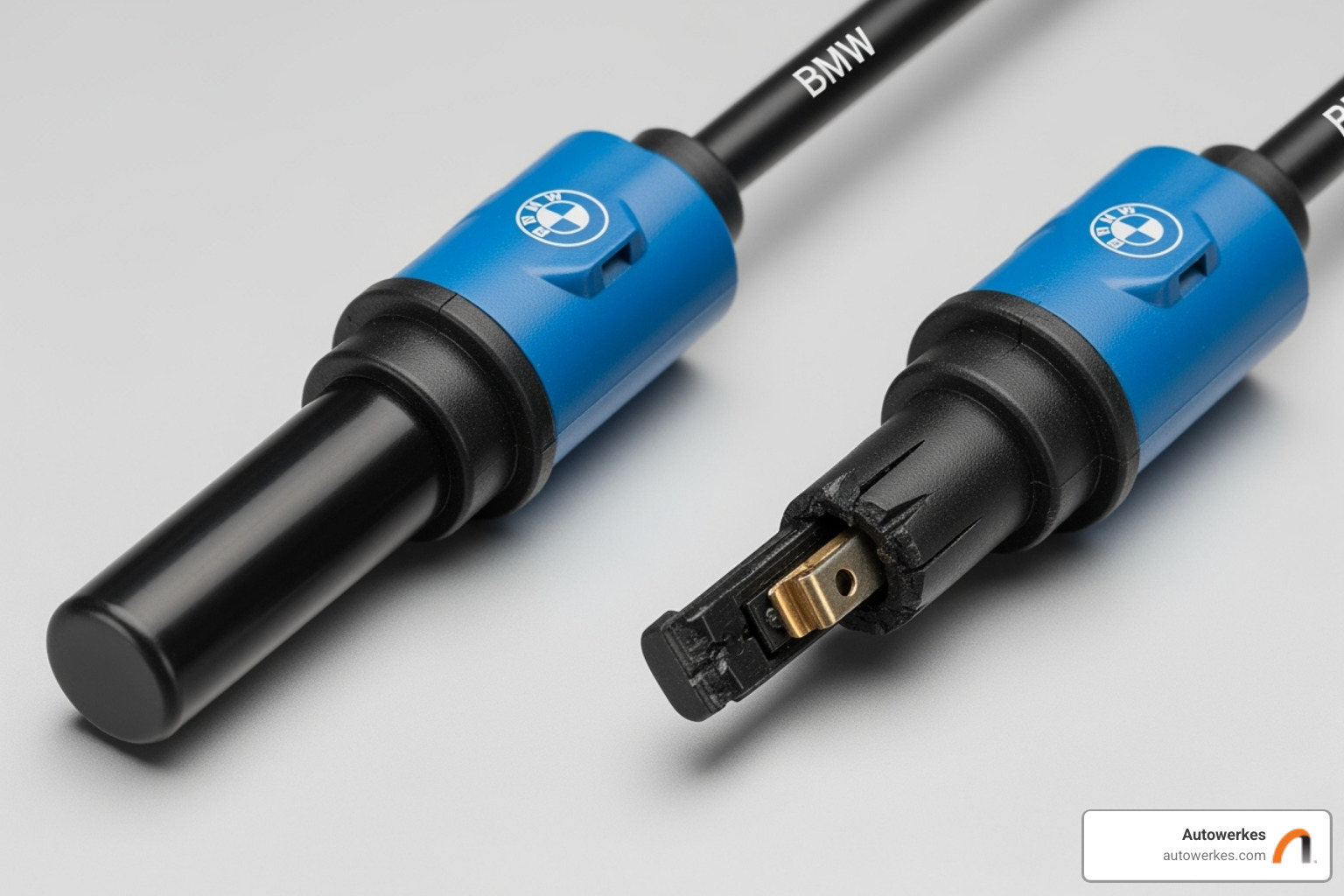
A Step-by-Step Guide to BMW Brake Pad Wear Sensor Replacement
This process is logical, but safety must come first.
Safety First
Work on level ground, use jack stands under solid support points, and engage the parking brake. Be aware that models with an electronic parking brake may require diagnostic tools to service calipers.
Step-by-Step Removal and Installation
- Locate the Sensor: Most BMWs have sensors on the front left and rear right brake assemblies. The wire runs from the pad to a junction box in the wheel well.
- Remove the Old Sensor: After safely raising the car and removing the wheel, access the junction box (you may need to remove liner fasteners). Disconnect the sensor, unclip the wire along its path, and gently pry the old sensor from the brake pad with a screwdriver.
- Install the New Sensor: The most critical step is proper wire routing. Follow the original path precisely, using all factory clips. Push the new sensor into the pad until it clicks, reconnect it at the junction box, and reassemble everything.
Avoiding Common Mistakes
Common mistakes include not replacing the sensor with new pads, improper wire routing, and forgetting to reset the service light after installation. For community insights, Bimmerpost is a valuable resource.
Resetting the System After Your BMW Brake Pad Wear Sensor Replacement
This final step clears the warning light from your dashboard.
The Instrument Cluster Method
For many models (like E90s), you can use the instrument cluster reset:
- Turn the ignition on (engine off).
- Press and hold the trip reset button until the service menu appears.
- Use short presses to cycle to the brake service icon (front or rear).
- Press and hold the button until "RESET?" appears.
- Release, then press and hold again to confirm the reset.
When You Need an OBD-II Scanner
Newer BMWs often require a BMW-compatible OBD-II scanner for a reliable reset. Connect the scanner, steer to the "CBS Reset" or "Service Functions" menu, and follow the prompts. A generic scanner may not work.
Troubleshooting a Persistent Light
If the light won't reset, check for loose connections at the pad and harness. Ensure the wire isn't pinched and that you used the correct part number. A persistent light may also indicate other fault codes (like 5F12-5F16) that need to be cleared with a proper BMW diagnostic scanner.
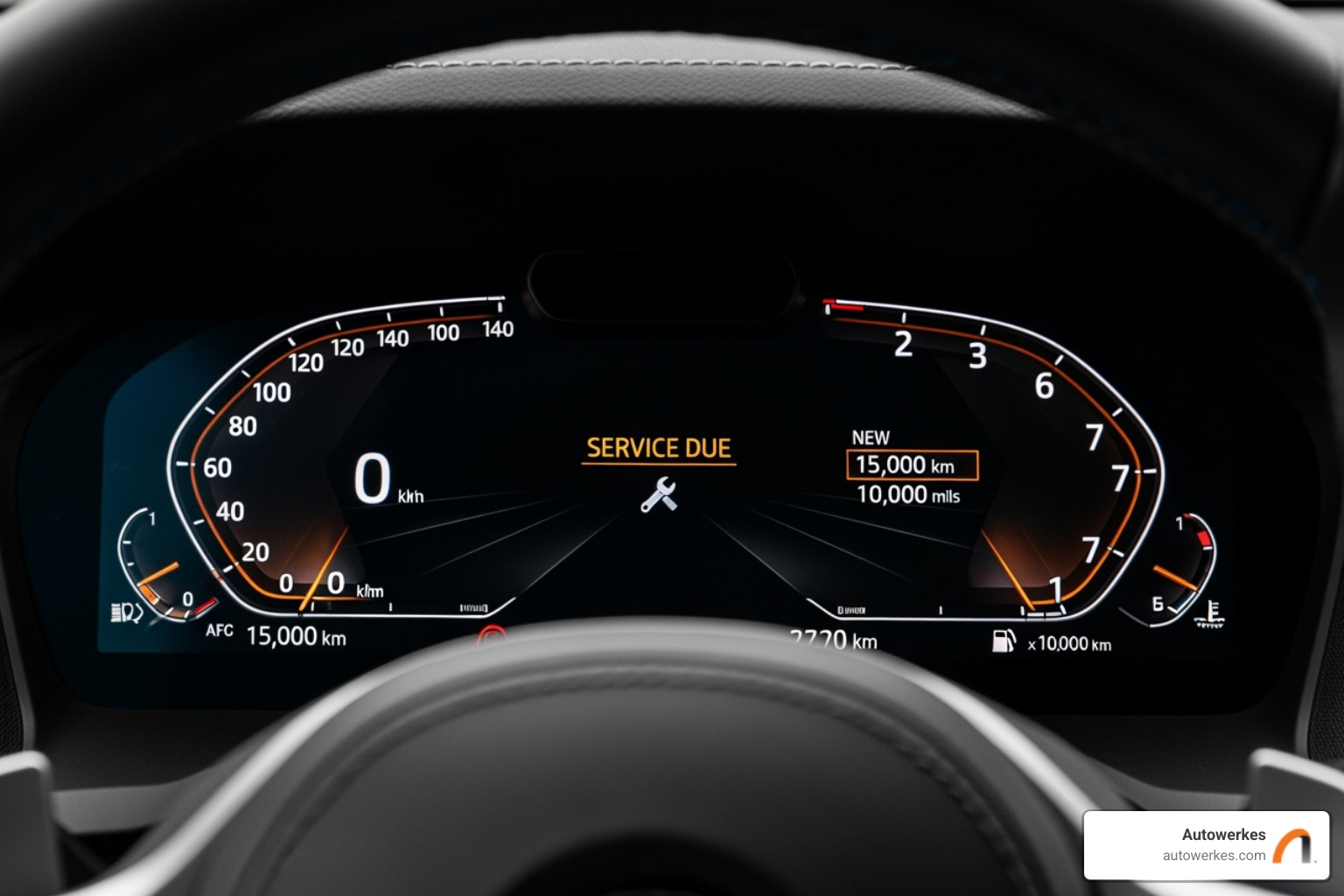
Ensuring Peak Performance: When to Call the Experts
While a BMW brake pad wear sensor replacement can be a rewarding DIY project, sometimes professional service is the best choice. What seems like a simple sensor issue can be a symptom of a larger brake problem that requires a trained eye.

Why Choose Professional Brake Service?
At Autowerkes, choosing professional service means you're not just getting a sensor replacement – you're getting peace of mind. Here’s why expert hands make a difference:
- Comprehensive Inspection: We don't just swap the sensor. Our technicians inspect the entire brake system—pads, rotors, lines, and fluid—to identify underlying issues before they become major problems.
- Correct Tools & Expertise: We use factory-grade diagnostic equipment, which is essential for tasks like servicing electronic parking brakes on modern BMWs. Our technicians have model-specific knowledge to diagnose issues correctly the first time.
- Guaranteed Work: All our repairs are performed with quality parts and backed by our commitment to excellence. You drive away with confidence knowing the job was done right.
Learn more about how our dedicated team can keep your ultimate driving machine in top condition by exploring our BMW Auto Repair services.
Schedule Your BMW Brake Service in Huntington Beach
As the premier destination for BMW care in Huntington Beach, Autowerkes is staffed by expert technicians who are passionate about these vehicles. We use only quality parts—OEM or top-tier aftermarket—to maintain your vehicle's integrity and performance.
Our commitment to customer satisfaction means we provide clear explanations and transparent service options. Our Testimonials reflect the trust our clients place in us.
Don't let a brake warning light compromise your safety or driving enjoyment. Your BMW deserves expert care. Ready to experience the Autowerkes difference? Book your BMW brake repair today and drive with confidence.

.svg)



